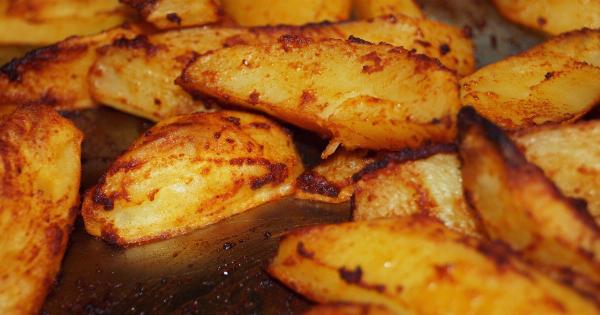Adolescence is a critical phase in a person’s life when rapid physical, cognitive, and emotional changes occur. It is during this period that young individuals develop habits that can shape their future health and well-being.
One significant aspect of adolescent health is their dietary habits, which play a vital role in their overall development and can impact various aspects of their lives, including their alcohol consumption patterns.
The Link between Unhealthy Eating and Alcohol Intake
Unhealthy eating habits, characterized by the consumption of processed foods, excess sugar, and inadequate nutrient intake, have been consistently linked to various health issues in adolescents.
These eating habits often lead to nutritional deficiencies, obesity, and an increased risk of chronic diseases. However, recent research has also revealed a concerning association between unhealthy eating habits and higher alcohol intake in adolescents.
1. Nutritional Deficiencies and Alcohol Cravings
A key factor linking unhealthy eating habits and higher alcohol intake in adolescents is the presence of nutritional deficiencies.
When the body lacks essential nutrients, it can disrupt normal brain functioning and lead to imbalances in neurotransmitters, affecting mood and behavior. These imbalances can increase the likelihood of alcohol cravings and the urge to seek solace in alcohol as a means of self-medication.
2. Emotional Eating and Alcohol Use
Unhealthy eating habits often go hand in hand with emotional eating, which is characterized by consuming high-calorie foods as a response to negative emotions or stress.
Emotional eating can create a cycle of poor food choices and subsequent guilt or dissatisfaction, leading to increased emotional distress. In an attempt to cope with these emotions, adolescents may turn to alcohol as a means of escape or to numb their feelings temporarily.
3. Peer Influence and Unhealthy Eating
The social environment plays a crucial role in an adolescent’s development, including their eating and drinking habits. Unhealthy eating patterns can be reinforced by peer pressure and the desire to fit in with certain social groups.
Similarly, adolescents who engage in unhealthy eating habits due to peer influence are also more likely to be exposed to situations where alcohol consumption is normalized or encouraged. As a result, their alcohol intake may increase as they seek acceptance and validation within their social circles.
4. Impact of Advertising and Marketing
The influence of advertising and marketing cannot be ignored when discussing unhealthy eating habits and alcohol intake in adolescents.
The food and beverage industry heavily promotes processed and sugary products, which are often attractive to young individuals. Constant exposure to these advertisements can create favorable associations between unhealthy foods and alcohol, making it more likely for adolescents to engage in both behaviors simultaneously.
5. Underlying Psychological Factors
Unhealthy eating habits and higher alcohol intake in adolescents can also be influenced by underlying psychological factors.
Adolescents who struggle with body image issues, low self-esteem, or symptoms of depression may turn to food or alcohol as a coping mechanism. This can create a vicious cycle where unhealthy eating habits and alcohol consumption reinforce each other, leading to long-term detrimental effects on both physical and mental health.
Prevention and Intervention Strategies
To address the concerning link between unhealthy eating habits and higher alcohol intake in adolescents, targeted prevention and intervention strategies are essential. Some effective approaches include:.
1. Comprehensive Health Education
Implementing comprehensive health education programs in schools that focus on the importance of healthy eating, balanced nutrition, and the potential consequences of excessive alcohol consumption can help raise awareness and equip adolescents with the knowledge they need to make informed choices.
2. Nutrition and Psychoeducation
Integrating nutrition education and psychoeducation into healthcare settings can be beneficial for adolescents struggling with unhealthy eating habits and alcohol use.
These interventions can help individuals recognize the interconnections between their dietary choices and alcohol intake and provide them with the necessary tools to make healthier decisions.
3. Encouraging Positive Peer Influence
Promoting positive peer influence within schools and communities can help create a supportive environment for healthy eating and reduced alcohol consumption.
Peer-led initiatives, support groups, and mentorship programs can empower adolescents to make positive lifestyle choices and provide them with a sense of belonging outside of risky behaviors.
4. Regulation of Food and Alcohol Advertising
Implementing stricter regulations on food and alcohol advertising targeted at adolescents can help reduce the likelihood of harmful associations between unhealthy eating and increased alcohol intake.
By curbing the promotion of unhealthy products, adolescents may have a better chance of making healthier choices for their overall well-being.
Conclusion
Unhealthy eating habits have far-reaching consequences for adolescent health and development. As highlighted in this article, these habits can also contribute to increased alcohol consumption in this vulnerable population.
By understanding the interplay between dietary choices and alcohol intake, we can develop targeted interventions and prevention strategies to promote healthier lifestyles among adolescents, setting the stage for improved long-term well-being.





























